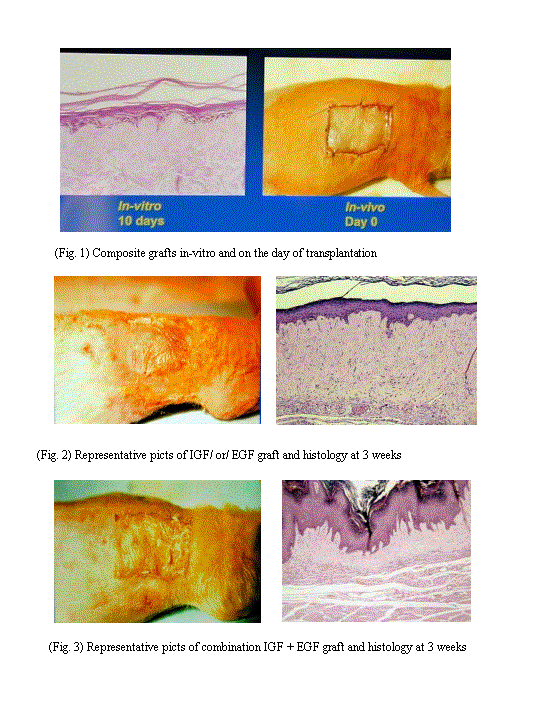Wednesday, October 29, 2003
3844
P08: Genetically Modified Skin Substitutes Overexpressing IGF and EGF Synergistically Alter the Wound Healing Environment
Purpose: Epidermal Growth Factor (EGF) and Insulin- Like Growth Factor (IGF) have both been implicated as key modulators of keratinocyte proliferation. This study was designed to test the hypothesis that neonatal keratinocytes could be genetically modified to secrete one or both of these epithelial growth factors in supraphysiologic quantities. Furthermore, it was hypothesized that these keratinocytes could be used to generate composite skin grafts which would have unique biological properties compared to normal keratinocyte grafts when transplanted to athymic mice. Methods: Keratinocytes from the same foreskin were co-cultured with a cell line of fibroblasts that had been modified to secrete retroviral particles with the genes for EGF and IGF. Successfully modified keratinocytes were then seeded onto acellular human dermis and cultured in-vitro to form composite grafts (fig. 1). These grafts were then transplanted to full thickness wounds on athymic mice and harvested at 1-6 weeks. Results: Cells modified with EGF and IGF secreted supraphysiologic quantities of both growth factors in-vitro. Starting at one week post transplantation obvious gross and histologic differences could be seen between the grafts modified with just EGF or IGF and the grafts modified to secrete both factors simultaneously. The EGF/IGF combination grafts demonstrated thick, hyperkeratotic skin and massive epithelial hypertrophy(Fig. 2-3). Conclusions: Genetic modification is a superior way to explore the effects of specific growth factors on keratinocyte growth and function. The extraordinary response of the grafts to the combination of EGF and IGF point us toward the next step in enhanced would healing.
View Synopsis (.doc format, 465.0 kb)
See more of Posters
Back to Plastic Surgery 2003 Complete Scientific Program
Back to Plastic Surgery 2003 Meeting home

